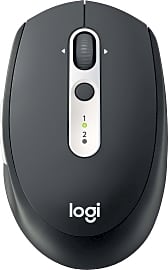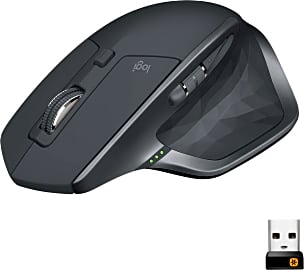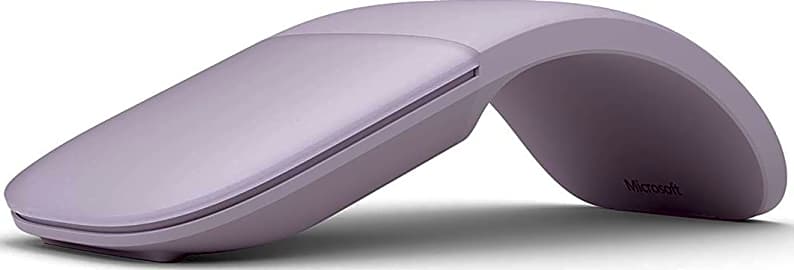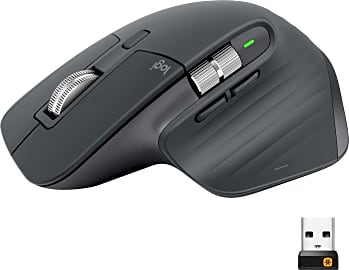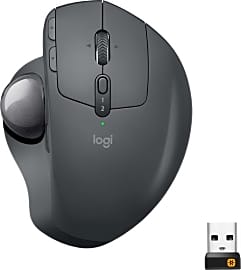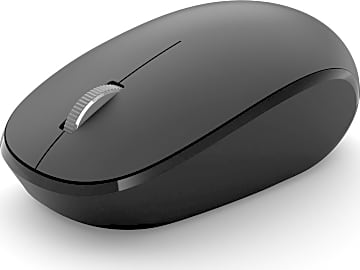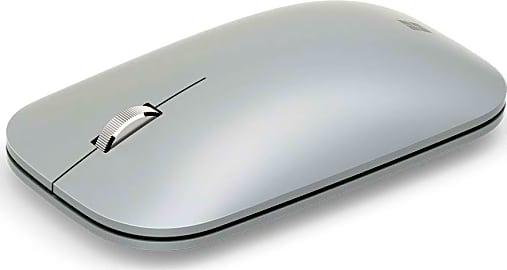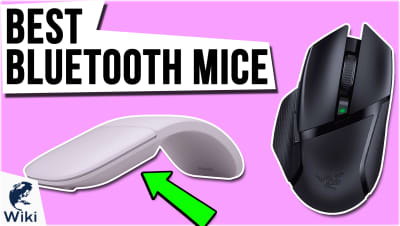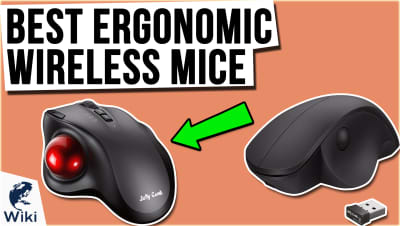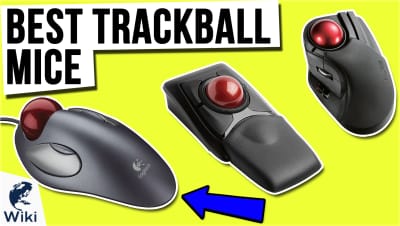The 10 Best Wireless Mice

This wiki has been updated 37 times since it was first published in October of 2015. If you want to move beyond the limited capabilities of your laptop's trackpad or free your desktop from its wires, check out these Bluetooth mice. They work with all major operating systems and have a plethora of useful and productivity-enhancing features. Many can even switch between different devices with the click of a button. We've ranked them by sensitivity, comfort, and build quality. When users buy our independently chosen editorial recommendations, we may earn commissions to help fund the Wiki.
Editor's Notes
November 24, 2020:
Replaced the Logitech MX Anywhere 2S with the Logitech MX Anywhere 3, which is compatible with a wider range of operating systems, features upgraded scrolling technology, and comes in more colors than the 2S. The VicTsing 120AB was removed due to availability concerns.
The Razer Basilisk X HyperSpeed was added to provide an option for gamers. It has six programmable buttons and is highly responsive. Plus, the aesthetic of it should fit in nicely with most dedicated gaming computers.
The Microsoft RJN, on the other hand, is a good choice for someone who just wants a no-frills mouse that's easy to set up and use. While its lack of extra buttons may be a drawback for tech-savvy users, it will get the job done for those who want a simple and reliable wireless mouse.
When picking a mouse, there are a few factors you should keep in mind. One thing worth considering is the power source. Some options, like the Logitech MX Anywhere 3 and Logitech MX Master 3 have internal batteries that can be charged via USB. This can be useful if you aren't great at keeping batteries around the house. Many models, like the Microsoft RJN and Logitech M585, run on a single AA battery. If you want to avoid the waste of throwing away disposable batteries, you can always use a rechargeable battery instead.
If you're left-handed, finding a mouse that works for you can be a challenge. However, there are several options that are ambidextrous, including the Microsoft Arc, Microsoft RJN, and Microsoft Surface Mobile. The Logitech MX Anywhere 3 has a nearly-symmetrical design that should be fairly comfortable in either hand, but the thumb buttons on the left side are clearly placed with right-handed users in mind.
December 06, 2019:
You may notice a particular brand having claimed a majority of the spots on our list. That's no mistake. The Logitech M720 Triathlon has just about all the features you could want, it doesn't cost very much, and it just feels nice to hold. I've used one for more hours than I care to count and the experts are right; it's well worth the relatively moderate price. The Logitech M585 is a bit more portable but functionally similar, and the Logitech MX Master 2S is the most reasonable high-end model for desktop use. They have released the newer Logitech MX Master 3, but it's awfully expensive and doesn't add a ton to the experience, so until its price drops the 2S is still a better buy for most people. For what it's worth, you don't have to worry much about its lifespan, as long as you don't haphazardly toss it in a bag where the buttons or especially the scroll wheel are vulnerable. Logitech's devices are also useful for their Unifying receiver connectivity that utilizes the 2.4-gigahertz wireless band for latency-free control, and the nicer ones are compatible with the FLOW software that can greatly increase productivity when using more than one device.
The Logitech MX Ergo is an excellent and ergonomic alternative to a traditional mouse, although its trackball does have a bit of a learning curve. We included the Logitech MX Anywhere 2S because it is, really, a fantastic mouse; however -- and the reason for this is inexplicable -- pressing down on the scroll wheel has the effect of changing from incremental to infinite scrolling rather than activating the middle button like almost every other mouse in existence. If you don't use the middle button much or don't mind constantly moving your finger from the scroll wheel to hit the actual middle button (located beneath the wheel), go for the Anywhere 2S. I, however, returned mine almost immediately.
But believe it or not, there are other quality manufacturers out there. The Microsoft Arc Mouse and Microsoft Surface Mobile are both remarkably compact and therefore portable; the Arc offers touch scrolling and convenient auto power-on functions, and while they're both somewhat limited as far as buttons go, the Surface also misses out on the elegant touch capability of the Arc. Rounding out our Bluetooth mouse selection are the Perixx Perimice-802 -- a device so small it's cute -- and the VicTsing 120AB. VicTsing isn't traditionally a big-name computer hardware manufacturer, but they've been making decent mice for at least a year now, and in fact I carry an older version of this mouse when I'm traveling in case my primary one gives out.
A Tail Long Enough To Function
For as long as computers have been around, the communication between parts manufacturers and office furniture designers has been deplorably minimal.
For as long as computers have been around, the communication between parts manufacturers and office furniture designers has been deplorably minimal. There are desk units and office stations for the home out there that can barely fit half the towers on the market, and some still boast dimensions amenable to old school computer monitors, as though the flat screen had never been invented.
One of the first such pieces of office furniture I had in my home supported an old Dell desktop that probably had fewer megabytes of hard disk space than most modern computers have in RAM. It was also probably made in a prison, because this was the golden age of computer manufacturing. The furniture piece was part desk, part shelf unit, and it came in at just under six feet tall, a real albatross.
The worst part about it, though, was that the distance from the back panel of the tower to the spot where any right-handed person would put their mouse pad was comparable to the distance from one end of the Sahara to the next. And don't forget that the desert is slowly expanding.
As a result, the mouse could just barely reach the pad, so if you wanted to move the cursor down on the screen, you had to do so in a half-dozen micro-movements. Bluetooth technology existed at this point, but it was neither widely available nor economically practical, so we struggled on.
Any of the Bluetooth mice on our list would have been a godsend. Each mouse is outfitted with a Bluetooth transmitter, some of which connect with a paired Bluetooth receiver that you plug into any of your computer's USB ports. Other mice on our list pair directly with the receiver in your computer. The outboard USB receivers also have all of the necessary software on them, so when you plug them in, they automatically walk you through the installation of any and all drivers you might need to use the mouse without interruption or worry.
When it comes to the power for your Bluetooth mouse, most run on simple AA or AAA batteries, though a couple of the options here are rechargeable.
A Mouse In The Hand...
Back before mice used an optical tracking mechanism, one of the worst things about using a mouse was having to intermittently clean the trackball on its underbelly. About once a month, the mouse would confront you with physical evidence of average human filth. Most of the grit and grime on those balls was, like the vast majority of dust, made up primarily of shed human skin cells.
This is largely a matter of personal preference, but it's important to keep in mind.
Even without the trackball, though, maintenance of a mouse–or any part of your computer–is a pain, so any way you can avoid it is a good thing. The Bluetooth mice on our list require extremely minimal maintenance, though evaluating that probability in each might help you narrow down your selection.
The thing you'll have to do more than anything else with these mice is change or recharge the batteries. Obviously, the mice that operate on disposable batteries make your life easier in the sense that you can get them back up to full power in as little time as it take you to swap the batteries out. Rechargeable mice need to spend time charging before you can use them again.
What the rechargeable mice offer you, though, is a little economic and environmental peace of mind. Bluetooth can really chew through batteries, and not only can that expense add up rather quickly, you'll also create a ton of non-recyclable waste in the process.
Once you've decided what you want your power source to be, you can think about how these mice will fit into your hand. If you're going to use your mouse for long stretches of time, it's vital that it has some ergonomic comfort in store for you. This is largely a matter of personal preference, but it's important to keep in mind.
Danish King Meets English Mouse
The first computer mice in history used neither an optical tracking system, nor a tracking ball. Invented by Douglas Engelbart in 1964, the first computer mouse ran on a pair of metal wheels connected to a circuit board and housed in a cubic wooden shell. That design would dominate the landscape until eight years later, when Bill English developed a mouse that used a trackball much like the ones still available today.
The first computer mice in history used neither an optical tracking system, nor a tracking ball.
Seventeen years after the development of a trackball mouse, Swedish inventor Johan Ullman invented a short-range radio communications technology that he named after a tenth-century Danish king famous for uniting tribes and introducing Christianity to the far reaches of his domain. That king's anglicized name was Harald Bluetooth.
Although the technology was originally designed for hands-free, wireless headsets, the ability to transmit smaller flies like music in the same essential way that a radio tower does appealed greatly to both software and hardware industries looking to streamline aspects of the computer user experience. In swift order, throughout the late 90s and into the 2000s, manufacturers designed more and more of their products with Bluetooth connectivity, including their wireless mice.


